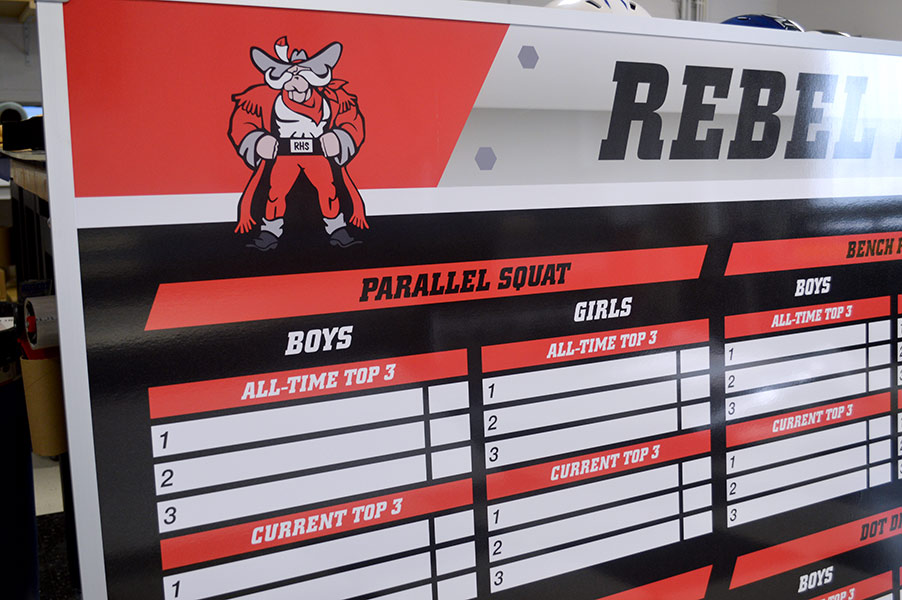In a perfect world, athletes would show up to the weight room each day personally motivated to get better. In reality, this is often not the case. Generally, coaches are required to provide the excitement and encouragement to get their team pumped up.

Creating some internal competition is a great way to motivate and encourage athletes. A weight room record board can be a great way to foster healthy competition by making each day, and each lift, an opportunity to compete. Once athletes feel the thrill of hitting a personal best and knocking someone else off the board, the results will follow.
Here are some of the most common questions we get asked by coaches regarding weight room record boards along with our recommendations.
What lifts should I include on my weight room record board?
RECOMMENDATION: Most boards that we produce include between 6 and 10 strength and conditioning exercises. There is no need to include every lift and exercise your athletes perform. A strength record board should focus the components of your core workout.
Keep in mind, your board shouldn’t only focus on strength exercises. Focus on the complete athlete by including conditioning and explosion tests as well. For basketball that may mean vertical, 40 yd dash for football, etc. Choose the exercises that you stress day to day and would make the most positive impact on your program.
Should I include all-time, current records, or both?
RECOMMENDATION: It’s best practice to include a combination of all-time and current records on weight room record boards. Obviously different athletes are on different levels of the strength and fitness spectrum. By including all-time records, you keep your top performing athletes competing against the program’s historical best.
A list of current athletes can help push second- and third-tier athletes as they compete against their peers. Getting their name on the board can be a big motivator for athletes in the weight room.
What size record board do I need?
RECOMMENDATION: The appropriate board size is dictated largely by two factors. The first is the amount of available wall space in your weight room. Choose a location for your record board that is prominent and can be readily seen by your athletes. The size of this space may help you determine the maximum size of your record board.
The other factor that determines the size of a strength record board is the content displayed on it. Obviously, a board that includes 8 lifts and tracks all-time and current athletes will need to be about double the size of one that tracks four. Boards that include both boys and girls versus just one gender will need to be larger as well.
As a starting point, a 4’x4’ board will usually hold between 4 – 6 exercises, a 6’x4’ board will hold 6 – 8 exercises, and a 8’x4’ board will typically hold between 8 – 10 exercises.
How many record holders should I track for each exercise?
RECOMMENDATION: Include between 1 – 3 all-time records, though most customers include just one all-time slot. This all-time section keeps the program leaders motivated once they have surpassed their peers.
Below the all-time records, we suggest a larger list for current athletes. The current athletes are the ones in the weight room every day and the ones affecting your program now. A top 5 list of current leaders is usually a good starting point. Five spaces provide enough room for several different players to get recognized.
Ultimately, as every single project is unique, our design team is there to help you balance board size, the number of exercises, and the number of athletes recognized.
Want to start motivating in the weight room? Reach out today to speak with one of our reps. They will be happy to answer questions, highlight the options available, and send you a custom proof and quote.